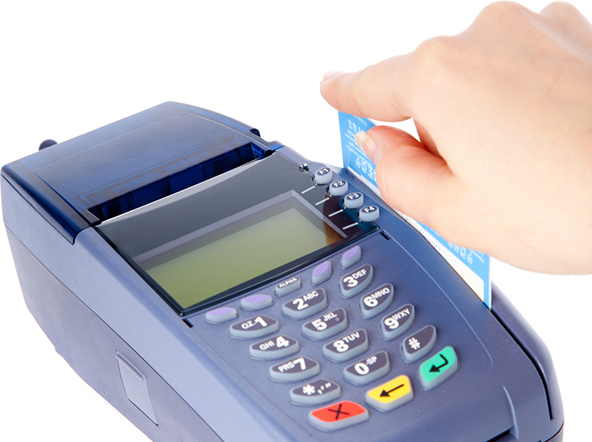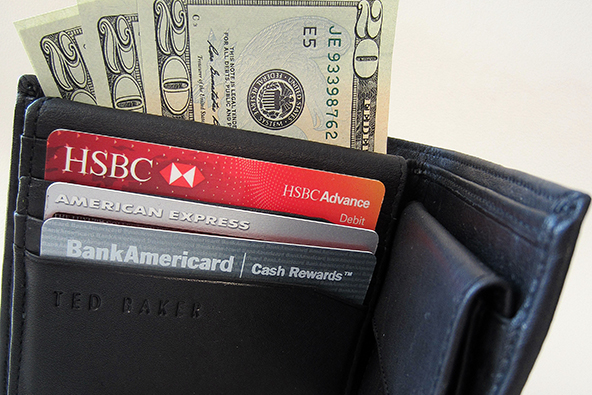Qualified, Mid-Qualified and Non-Qualified Credit Card Transactions

Both Visa and MasterCard publish interchange fee tables with the various payment processing rates that apply to credit and debit card transactions. The application of these rates is based on a variety of factors related to the particular circumstances of the sale and the way the payment is processed, as well as on the type of the card that was used. Typically payments processed in a card-not-present environment (e.g. online or over the phone) are assessed higher processing fees than payments processed in a face-to-face setting. Payments made with regular consumer types of cards are generally processed at lower rates than payments made with rewards, business-to-business or commercial cards. Debit cards are processed at lower interchange rates than credit cards. In order to simplify the pricing for their merchants, the majority of the processing companies have elected to use various tiered pricing models (two-tiered, three-tiered, six-tiered, etc.). Please see Interchange Plus Pricing vs. Tiered Pricing for a detailed comparison between the tiered and the interchange-based pricing models. There are three general classifications used in the various tiered pricing models:
- Qualified rate.
- When a transaction is processed in accordance with the rules and standards established in the Payment Processing Agreement, signed by the merchant and the processing bank, and
- It involves a regular consumer credit card,
It is processed at the most favorable rate.?áThis rate is called a “Qualified Rate” and is set in the merchant’s Payment Processing Agreement. The Qualified Rate is set based on the way a merchant will be accepting a majority of their credit cards. For example, for an internet-based merchant, the internet interchange categories will be defined as Qualified, while for a physical retailer only transactions where cards are swiped through a terminal will be Qualified. - Mid-qualified rate.
- When a consumer credit card is keyed into a credit card terminal instead of being swiped or
- The cardholder uses a rewards card, business-to-business or another special type of card
The transaction is charged a discount rate that is less favorable than the Qualified. This rate is called a “Mid-Qualified Rate.” - Non-qualified rate.
- When a special kind of credit card is used (like a rewards card or a business card), or
- A payment is not processed in accordance with the rules established in the Payment Processing Agreement, or
- It does not comply with some applicable security requirements,
The transaction is charged a discount rate that is less favorable than both the Qualified and Mid-Qualified Rates. This rate is called a “Non-Qualified Rate.”
As you can see from the descriptions above, the difference between the mid- and non-qualified rates can be very hard to identify so merchants should examine their pricing agreements very carefully and make sure they understand exactly when each rate applies before they sign anything.
Whenever a transaction is classified as mid-qualified or non-qualified and processed at a higher rate, the transaction is downgraded. Most likely, your payment processor will identify downgrades as either mid- or non-qualified transactions. But many payment processors simply put all of the downgrades together and report them as a miscellaneous fee.
You should closely monitor your mid- and non-qualified transactions. Generally, if your downgrade levels exceed 10 percent, you have a problem.
Visa and MasterCard do not publish their rules and regulations or the payment processing standards required to get the lowest interchange rate. It’s up to credit card processing companies to understand and implement them to their merchants’ benefit. A high downgrade rate may indicate that your processor does not know the standards, or may be reluctant to implement best practices or new rules changes.
Be advised that high downgrade levels may arise from the way you process your orders, and may have little to do with your processing bank. Yet, even if the cause originates within your business practices, your payment processing service provider should be reviewing your account activity and suggesting ways to reduce these downgrades.
Image credit: Warwickshire.gov.uk.


We are an Auto repair shop near a university and have lots of student clientele. Payments for services come from mom and dad way far away, over the phone credit transactions. What can we do to avoid the excessive non qualified fees?